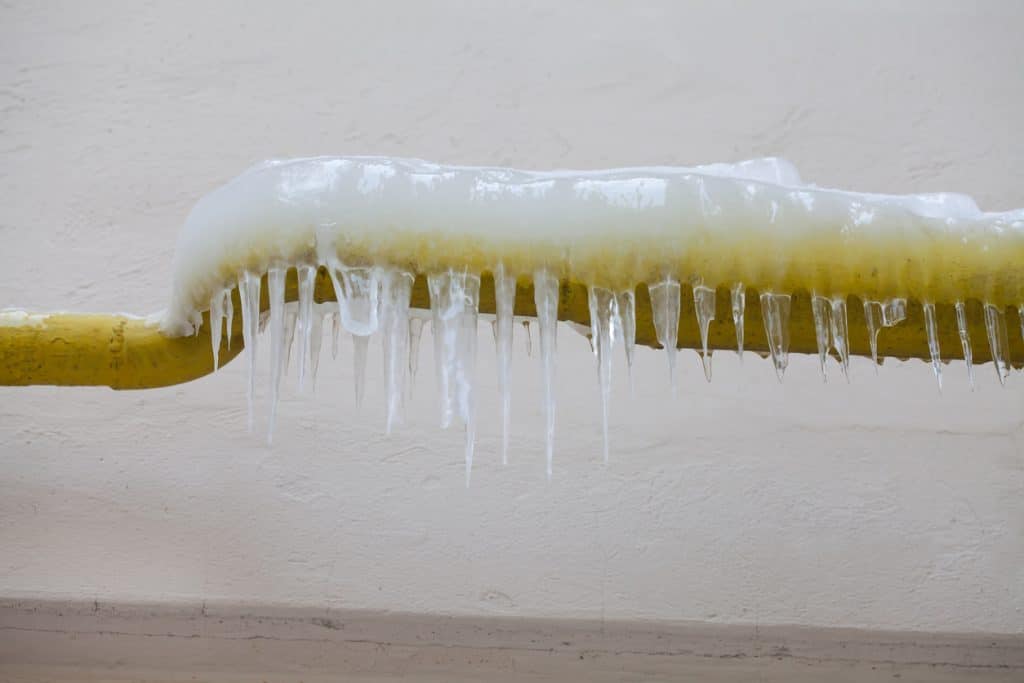Building research has shown that when winter temperatures drop below 20 degrees Fahrenheit in Grand Fork, ND and surrounding areas, this is the threshold to start watching for frozen pipes. One burst pipe can cause thousands of dollars in water damage.
The following four steps will get you through a frozen pipe crisis until you can get a plumber out to your home.
1. Shut Off Your Main Water Valve
The main water valve controls water flow from your municipal water supplier into your home, and turning off the main water supply to frozen pipes is critical. Leaving the water on can create a pressure buildup and cause the pipe to burst. This problem happens to many homes when the weather warms and pipes start to thaw. If you can, fill a bathtub with water before turning the water off. Use this water to fill the toilet tank for flushing and other needs until the problem is resolved.
Locate your main water valve by looking at the interior walls near the front of the house where your water comes in from the city water meter. The valve might reside inside your garage or near the water heater if your home is on a concrete slab.
2. Find the Frozen Pipe
Usually, one section freezes rather than a whole pipe. Most likely, you will find the frozen section someplace where the pipe is not insulated or protected from the cold. Look in the attic, outside, in crawl spaces, in the basement, and inside cupboards. In your Grand Forks home, heated air may not always make it inside cabinets that house water pipes.
Look for frost on the outside of pipes as another hint of where the frozen section lies. Inspect the frozen pipe for cracks and check surrounding areas for any signs of leaks or a break. In case you encounter one, call an emergency plumber right away. Extensive water damage can happen very quickly.
3. Try to Thaw the Frozen Pipe Section
Thawing a frozen pipe is usually best left for plumbers because they have specific equipment for the task. However, you can gently try to thaw the pipe in certain situations. This only works if you can access the frozen portion of the pipe.
Use heat from a heating pad, hair dryer, space heater, or hot towels. Avoid using any open flame on the pipes as it could easily damage them, cause cracks, or start a fire.
4. Turn On Your Faucets
You don’t need to turn on all faucets, just the ones that are fed from the pipe with the frozen section. Opening the faucet relieves the air pressure inside the pipe. This move can keep your pipe from bursting.
You can prevent pipes from bursting by letting water drip from faucets served by them. Even a trickle of running water through a pipe can prevent it from freezing.
Get Your Plumbing Ready for Winter
Maintain a healthy plumbing system by having a periodic maintenance check conducted by our professional plumbers at Total Care Plumbing. We will conduct a full winter-preparation inspection to identify potential risks and recommend cost-effective solutions. We also provide 24/7 emergency plumbing repair service.
Save yourself from burst pipes and expensive damage in Grand Fork. Call Total Care Plumbing today for your appointment!






